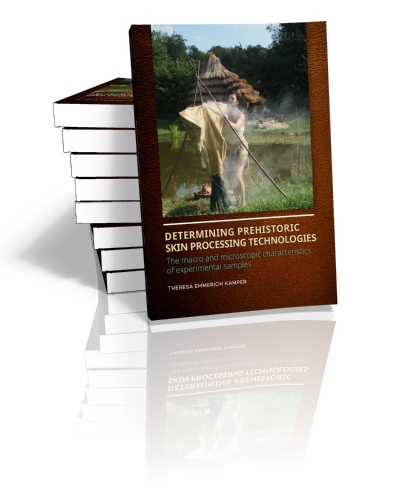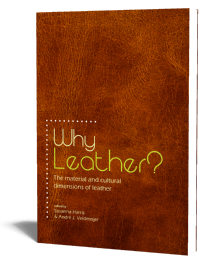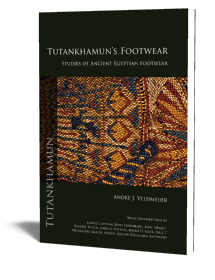Abstract:
The importance of skin processing technologies in the history and expansion of humankind cannot be overstated, yet these technologies can be difficult to identify in the archaeological record. This research outlines the development of a systematic, non-destructive method for identifying the tanning technologies used to produce prehistoric skin artefacts. The approach combines extensive archaeological research and over 25 years of the author’s personal tanning experience.
The method employs observations of an extensive sample reference collection, both macroscopic and microscopic, to produce a database of defining characteristics for six tannage types, from a large geographic area and time frame. The primary collection contains 22 species identified as economically important from both Europe and North America. A secondary collection of clothing and utilitarian items, made from traditionally processed skins, was used to add ‘in-life use’ traces to the database. The method was tested against both archaeological items from a variety of preservation contexts, and ethnographic items from museum collections across North America and Europe. This analysis confirmed that defining characteristics do exist between the primary tannage technologies, and that at least some defining characteristics survived in all preservation contexts. These can be recorded at multiple levels of observation, and often provide insight into small sections of the artefact’s production sequence and life history.
This research shows definitively that processed skin items from vastly different preservation contexts can provide a wealth of information about prehistoric tannage technologies, as well as information on manufacturing sequences and the conditions of use an item experienced. The method is a valuable analytical tool for those involved in conservation, curation or analysis of archaeological or ethnographic skin products. It provides a consolidated source of information for artisans working with traditional tanning, or re-enactors interested in the history or science of skin products. Finally, it serves as an example of the targeted use of experimental archaeology in a large-scale research project, and will be beneficial to anyone involved in experimental or experiential archaeology.
Contents
Preface
Chapter 1: Connecting disciplines & traditions in archaeological skin processing
Chapter 2: Methodologies for investigating early tanning technologies
Chapter 3: Rationale for faunal selection
Chapter 4: Methodology for chosen tanning technologies
Chapter 5: Analysis of experimental reference sample collection
Chapter 6: Collection analysis by tannage: Interpretation of results
Chapter 7: Identification of in-life use traces
Chapter 8: Tying it all together: discriminating traits by tannage type
Chapter 9: Discussion and conclusions
Appendices
Glossary
Bibliography


Dr.
Theresa Emmerich Kamper
Dr. Theresa Emmerich Kamper is an avid practitioner of traditional living skills and primitive technology of all kinds, and has tanned skins using traditional technologies for over twenty five years. She holds a Masters Degree in Experimental Archaeology from the University of Exeter, as well as a PhD on the microscopic analysis of prehistoric processed skin artefacts. She is currently an honorary research fellow with the University of Exeter and teaches practical courses across Europe, North America and the Near East on various tannage technologies as well as continuing to engage in research projects with a broad array of museum and academic institutions.
read more












